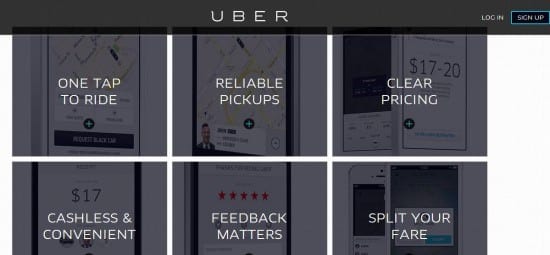Digital change management and getting buy-in for digital marketing transformation

One of the key aspects of evolving a traditional company into a digital company is getting buy-in. One of the challenges is that digital simply isn’t understood. Some Chief Executives think digital is tactical, it refers to activities like sending out newsletters, improving Facebook page or online catalogue. As a result, digital is often delegated to the most junior person in the building who is perceived to have a great understanding of the business functionality of tools like Facebook.
The exec team are missing the bigger picture. What’s worse is that less reputable agencies have constructed myths that it’s complicated and difficult and explain that only ‘masters of the art’ are able to access analytics, manage Instagram or increase Twitter followers.
The path towards digital transformation is littered with disaster. There have been many Twitter fiascos from the furniture store Habitat and McDonalds to the New York Police Department (NYPD) and you can read more examples here.
This has created fear. It’s nearly a ‘rabbit in the headlights’ moment. So how do you achieve buy-in and get the C-suite to adopt digital? Here are the 4 key elements you need to consider when getting buy-in for digital marketing transformation.
#1 Without understanding, you won’t get buy-in.
Your exec team need to get some training. Ok, it’s not reasonable to ask them to attend a full day session on how Facebook works, but you might get them to sign up for digital strategy courses, so they can see the bigger picture.
- It’s essential that they understand that digital is about revenue, profit and growth.
- It’s essential they understand that customers (regardless of age) are becoming more digital.
- It’s essential they understand that the competition are probably working on their digital plan right now, if it’s not already in place.
So identify some appropriate training and organise a course. Bizarrely, I’ve found that many in-house teams have expertise, but it’s easier to engage an external expert to come in and deliver the tougher messages.
#2 Your cheese is moving and you haven’t noticed.
“Who Moved My Cheese: An Amazing Way to Deal with Change in Your Work and in Your Life” was a useful management book originally popular in the 1990s that explained very simply how life changes and provided responses to adapt to the changes. It involves mice and human-like characters looking to find food as the supply changes in their maze. One of the characters highlights the attitudes and actions that are needed to respond to change.
Change Happens
They Keep Moving The Cheese
Anticipate Change
Get Ready For The Cheese To Move
Monitor Change
Smell The Cheese Often So You Know When It Is Getting Old
Adapt To Change Quickly
The Quicker You Let Go Of Old Cheese, The Sooner You Can Enjoy New Cheese
Change
Move With The Cheese
Enjoy Change!
Savor The Adventure And Enjoy The Taste Of New Cheese!
Be Ready To Change Quickly And Enjoy It Again
They Keep Moving The Cheese.
The challenge for managers in many businesses is that because of digital technology developments their world (or cheese) is moving and they haven’t noticed or aren't prepared to take action.
Interestingly, most of these changes impact the Marketing mix of the 7Ps which highlights the need for a digital audit to see where your business is right now.
There are many examples of where companies in a sector have not been as agile as their competitors, here are a couple:
Clinton Cards - stores closing, business sold

Established nearly 50 years ago in the UK, now owned by the US corporation, Schurmans and as Clintons new CEO Dominique Schurman commented when interviewed on Bloomberg “to succeed an organisation needs to keep pace, stay relevant and be in tune with its customers.” While the Internet and new competitors like Moonpig weren’t the sole reason for the demise of Clinton Cards, they were certainly contributory factors to the speed of the downfall.

Just look at the contrast within these two Facebook pages. Clintons is focusing on a sale, it has fewer than 25,000 likes. Moonpig is focusing on the season and has over 100,000 more likes. Whilst we all know that digital marketing is not a competition about likes, it does show how Moonpig has understood and engaged with its audience.
You could argue this is about the product offer (personalised versus off the peg), place (in store or online) and promotion (Moonpig offers ‘packages’ and has an easy to use app).
Uber - disruptive new business
You will have heard on the news how Taxi firms in London, Berlin, Paris and Madrid are complaining about Uber, the taxi service app, which will impact their business. This is clearly a fight over processes (hail a cab in the street or use an app) but it’s also about pricing, plus cabbies have access to their own app, Hailo, but the starting price for any journey is £10.

How many other traditional businesses do you know, in your sector, that are going through the same issues?
#3 Explore options and share the news
Change rarely happens overnight. It’s often a series of factors that have been considered for a while, but haven’t materialised. This can occur when the senior team resist change. You may hear ‘we’ve always done it this way’ or ‘it’s worked for years, nothing has really changed’.
Is this resistance or denial? In some cases it can be both.
To show the C-suite that life has changed, their cheese has moved, you can recommend ‘exploring options’. This really means capturing evidence. Here are 5 ways to do this:
- Commission or conduct a digital marketing audit and present the findings to the CEO and exec team. You can use PR Smith’s SOSTAC® model to get started.
- Benchmark the business using this tool.
- Prepare a presentation to highlight how the world is changing. Dave’s blog post 10 reasons why you may need a digital channel strategy? is a great primer for this.
- Share external research such as this infographic prepared by Danyl showing how marketing spend is moving.
- Build a business case and focus on the numbers.
#4 And here’s a key tip. Consider the timing.
Deliver your information, along with some ‘next steps’ just before the planning for shareholder, board or other key meeting stake place. There’s no better time to get a captive audience that’s seeking some good news!
Once the exec team have agreed that action is needed, you’re moving toward commitment. This is the time to catch up with the competition. More on this in my next post!
Annmarie will be facilitating the Digital Transformation breakout workshop at the Smart Insights conference where we will discuss approaches to digital strategy development and change management.













